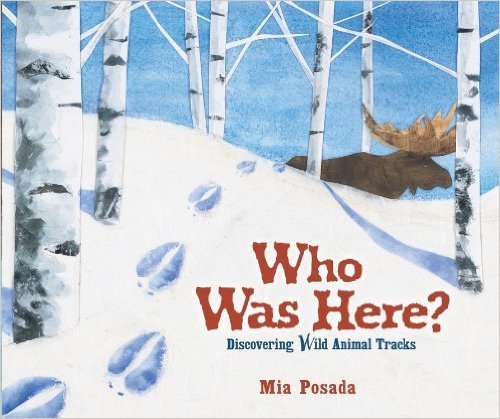Animal Tracking with Kids: Beginners Guide
Why Study Animal Tracks
At some point, we’ve all come across animal tracks that spark a curiosity about what creature left them behind. Searching for tracks and identify them is a skill that deepens your appreciation for nature and increases observation skills. Children naturally enjoy a mystery and love to investigate. No matter your age, follow these simple steps to help your whole family learn and discover the art of tracking together.
When to Track
Bird tracks in the snow
1. Winter
Snow is one of the easiest mediums for print recognition. The best time in winter to search for tracks is when there is fresh, undisturbed snow for the clearest prints.
2. Spring/ Summer
During spring and summer months, muddy or wet sandy areas are ideal for print identification.
This post may contain affiliate links that add no additional cost to you, I may earn a small commission to help offset the cost of my blog.
Helpful Tools
Animal tracking can be done without any equipment, but we have found that gathering a couple items can be helpful.
Cat paw print in snow
Object for Size Reference: By using a simple object such as a quarter, ruler or pencil (any of these will suffice) it can assist with gaging the size of the track so that you can compare to a field guide for reference later. Another tool you can create is a tracking stick by cutting notches in a stick to mark the size of the print and distance to the next print.
Phone: Take a picture to have as a reference for later. We have started a collection of prints this winter and keep adding new ones during our hikes.
Magnifying glass. Children especially love a magnifying glass when investigating smaller tracks.
Field Guide: A handy field guide is very beneficial. I highly recommend Animal Tracks Folding Pocket Guide. It is laminated and folds easily to fit into a backpack or slide in a back pocket.
Animal Tracks print identification trifold pocket guide
Nature Journal/ Pencil: A simple notebook can be used to sketch the prints and record any observations. We love using these inexpensive journals that can lay flat.
Animal Tracking App: iTrack Wildlife is digital field guide for animal tracks which can help you identify different prints.
Make a Bait Pile
To make it simpler, set up an area in your backyard where you can “collect” animal tracks. Make sure to select an area that has a smooth surface. Set some food out (ie apple, corn, meat) at night. Check back in the morning to discover what tracks have been left behind.
Observation Steps
1. When you first start looking for the tracks, take notice of
The number of toes
Are the claws visible
Track patterns
2. Look for the path the animal took to give clues. Note any other signs around the surrounding area. Broken branches, scrapings, scat (animal feces), gnawing or particular smells from scent glands.
3. Observe the surrounding land features for clues such as a pond or creek, woods or burrows in the ground or flatten areas could be where the animal bedded down.
Animal Groups
There are a couple classifications of animals that can help you identify prints. Here is a brief and overly simplified classifications.
Felines: cat, bobcat, lynx & cougar:rounded tracks with four toes but no claws
Canines: dogs, coyotes, wolves and foxes: four toes each but claws are usually visible.
Weasel family: minks, weasels, fishers, skunks, otters and badgers: 5 toes in front and rear.
Raccoons, opossums and bears: flat feet that have five toes in front and rear
Rodents/ Gnawing Animals: mice, rats, squirrels, chipmunks, porcupines, muskrats and beavers: 4 toes in front/ five on rear
*Exception: beavers and muskrats 5/5
Hoofed animals: Includes goats, sheep, deer, elk and caribou -two part heart shaped prints.
Track Patterns
Diagonal walkers- leave a staggered set of tracks like cats, dogs and hoofed animals.
Rabbit Tracks in the Snow
Bounders- members of the weasel family hop, front feet come down first and then back feet put up behind.
Gallopers- hunch their bodies, like rabbits, bringing their hind feet down in front and to the sides of the front paws for a U shaped track pattern.
Tree Dweller -If the prints lay side by side it usually is made by a tree dweller such as a squirrel.
Pacers- wide bodied animals such as raccoons, opossums, beavers, bears, porcupines, badgers, wolverines and skunks.
Bird, Deer, Muskrat, and Turkey Tracks in the Snow
Recommended Books/ Activities
Some great books for children are Who Was Here? Discovering Wild Animal Tracks by Mia Posada is a lovely book for children to discover and learn about the distinct animals that leave tracks. A great addition to the home library or school.
This book, Big Tracks, Little Tracks, covers many prints that you could easily find in your back yard, hiking or walking in a park. It also covers unique features about each print that can help determine what type of animal left it. Ex: canine prints have claw marks, feline prints do not; bunnies put their hind legs in front of their front legs; other animals step inside their tracks etc. A great book for teachers/ homeschoolers because it provides open ended questions and is discovery based.
After reading these books and searching for tracks, a follow up activity is to create animal prints using these rubbing plates.
Remember to pin for later and follow Discovering Anew on Pinterest for more nature activities and camping guides.












Lantern Lit Night Hikes are occurring throughout Michigan this winter. Here is your Michigan Winter hiking guide for 2024-2025 season, including a detailed map. Hike, ski or snowshoe as you journey through a glowing trail lit with lanterns. A variety of Michigan State Parks, MI recreation areas and nature centers are hosting these magical night hikes with cozy camp fires afterwards.